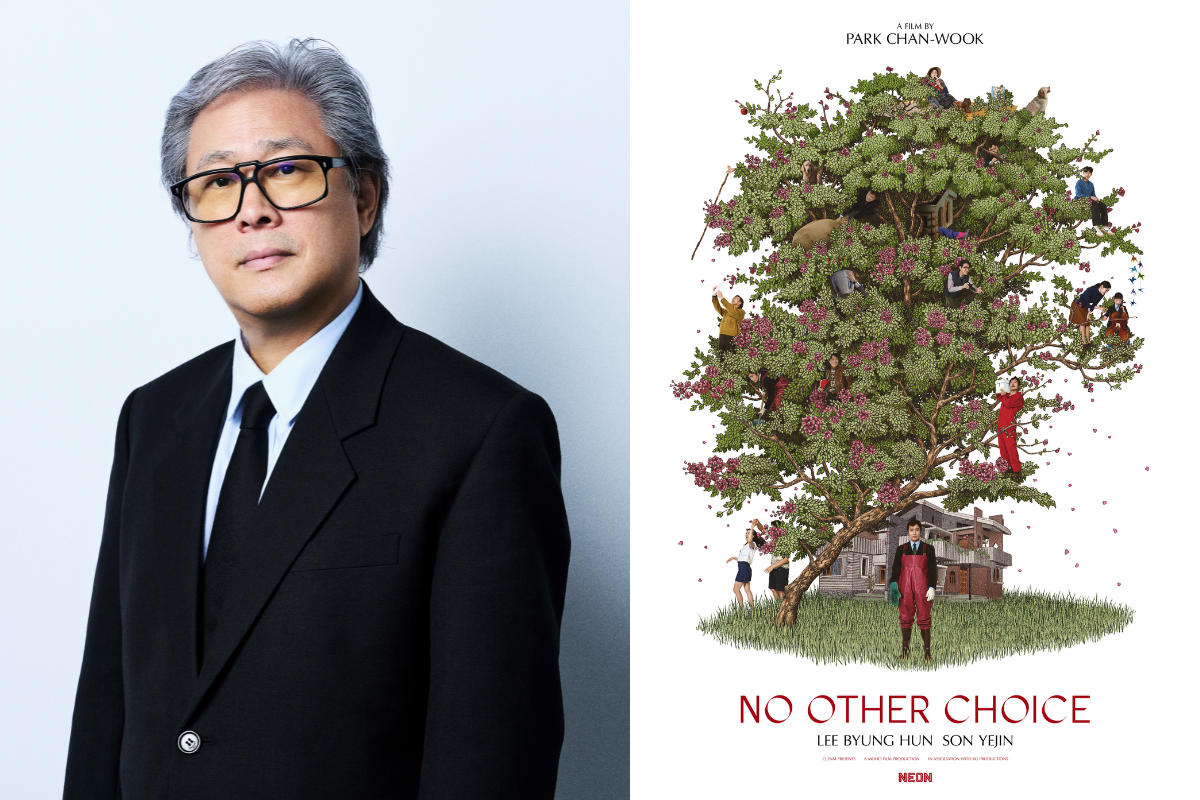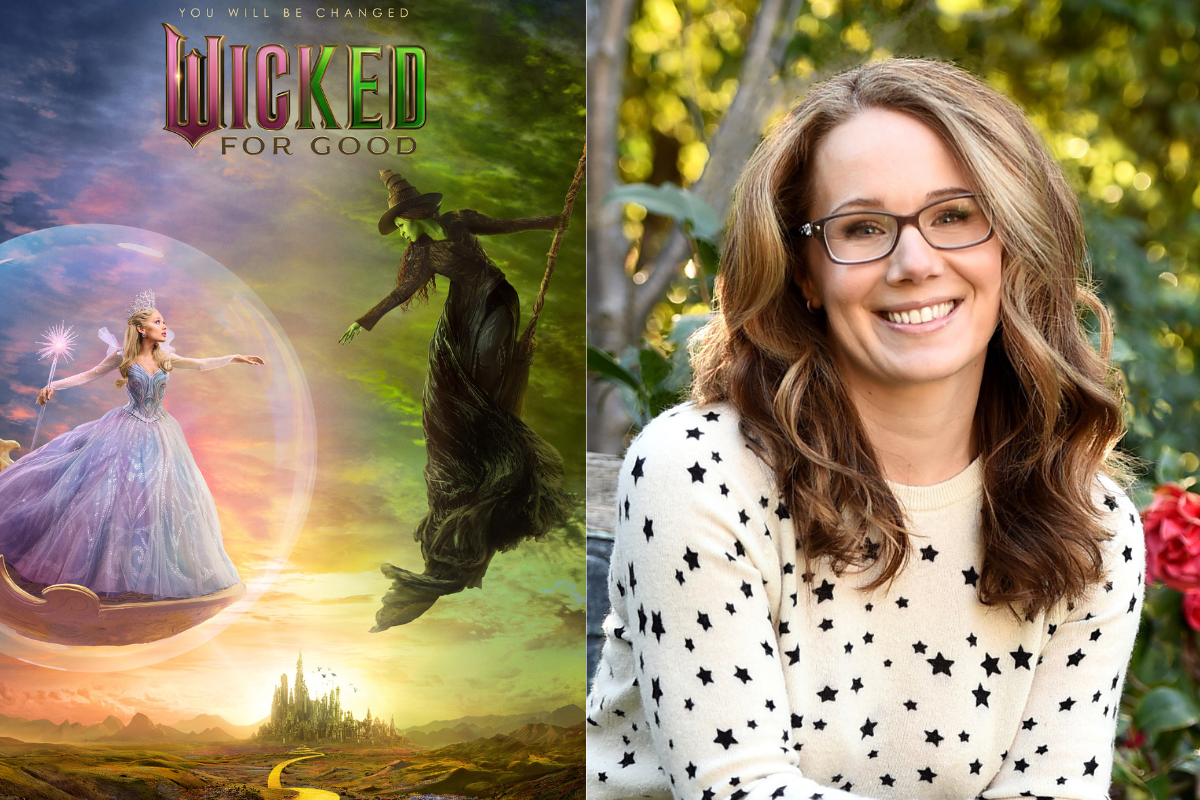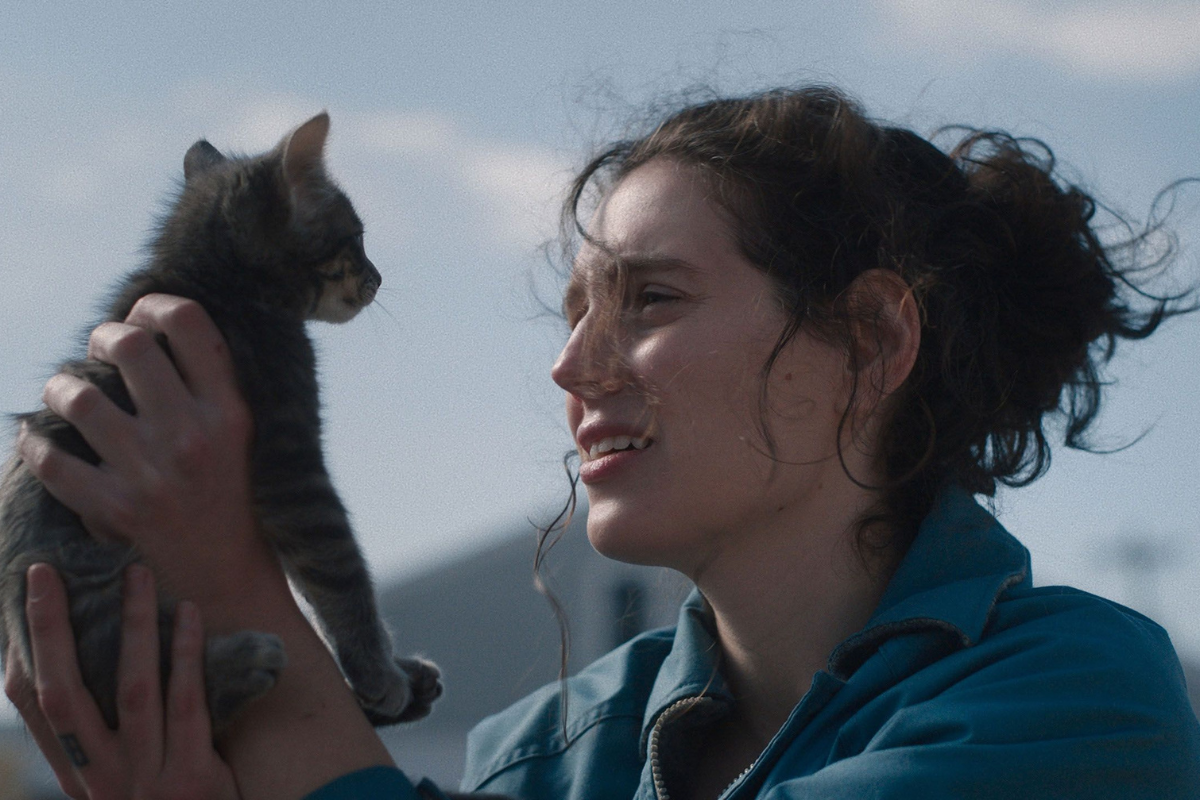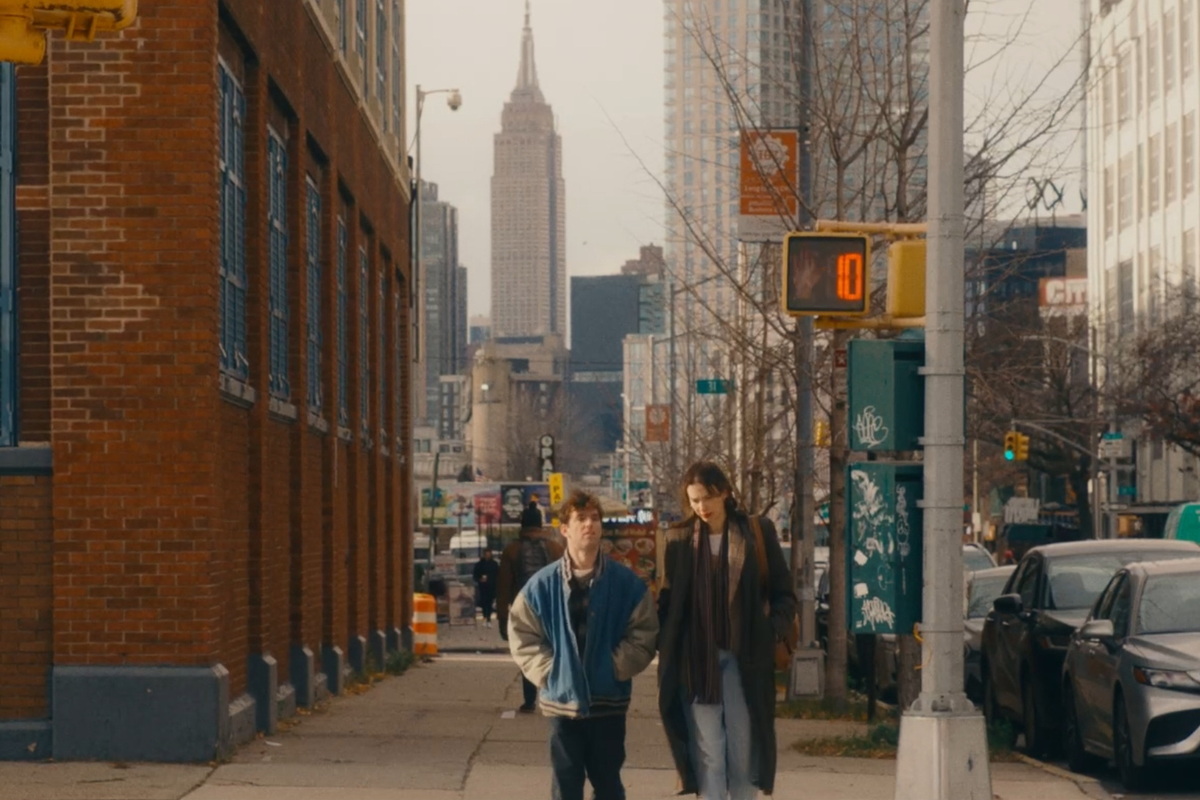Testimony as Theme: A Conversation with ‘June Zero’ Co-Writers Jake Paltrow and Tom Shoval
Tom Shoval and Jake Paltrow talk about developing the foundation for the screenplay, maintaining empathy across story transitions, Jake’s approach as a director, his dedication to working with film, and so much more.
The 1961 trial of Adolf Eichmann, a principal architect of the Holocaust, is revisited in a gripping and surprising new vision from American filmmaker Jake Paltrow. Based on true accounts, June Zero is told from the unique perspectives of three distinct figures: Eichmann’s Jewish Moroccan prison guard; an Israeli police investigator who also happens to be a Holocaust survivor and a precocious and clever 13-year-old Libyan immigrant.
There’s quite a wonderful trifecta of storytelling happening all at once in the historical drama June Zero – from capturing three different points of view, to three different testimonies, surrounding one historic event that all seamlessly converge. Co-writers Tom Shoval and Jake Paltrow passionately and relentlessly convey this historical moment – simply inspired by an article that Jake one day came across. And as they say, the rest is history.
Yet, there’s a lot happening under the hood of this “movie” mobile. There’s a rich cinematic language developed for each story, a sensibility and respect for these characters and their perspectives, and something quite organic to how the location is represented.
Both Tom Shoval and Jake Paltrow spoke with Script about developing the foundation for the screenplay, maintaining empathy across story transitions, Jake’s approach as a director, his dedication to working with film, and so much more.
This interview has been edited for content and clarity.
Sadie Dean: In terms of finding this story and exploring a specific period of time, what initially sparked your guys’ interest in writing the script?
Tom Shoval: Actually, it all came from Jake [Paltrow]. Jake came to Israel. He had this idea about doing a film on the building of the oven that was used to cremate Eichmann’s body.
Everything was because of Jake. And, without Jake, there was no movie, in a way because he was so curious and even maybe obsessed with the story of the oven that he read about in an article about how the oven was built to cremate Eichmann's body. He went to Israel to do research quests. And he did a lot of interviews and there were testimonies and a lot of material from the history of that time.
And he searched for somebody to work with and to write the film - somebody that is from Israel and can kind of like convey the language and could help tell the story. And he approached me. Actually there's a bit of nice a story behind it because my wife was one of the personal assistants and researchers of this film. And when Jake was searching for a writer, she asked her cinema teacher about possible possibilities for writers that are good for that mission. And I was one of the names and she called the first one and he couldn't do it. I think he didn't even answer the phone. So I was the second one. So, I earned Jake's movie. And my wife.
Sadie: I love that story. Jake, when did you come across that article? And then how long was that phase for you from article to research to script?
Jake Paltrow: I don't remember precisely when I read that, but I can tell you, I mean, it's nice to talk about it in the context of the screenwriting, which I firmly believe is the most important part of the process. And so, it was important to me in the research process to have a chance to speak to as many living participants surrounding what I thought at the time was what I knew quite a bit about, but then learned through the process, it was only the tip of the iceberg.
Through the process of the research, Tom's wife, in fact, found this claim by a man now an older man, but that when he was young, he had worked at this factory. And I think he had done an article maybe in some small regional paper in Israel, and she found the article, and then she found him and he agreed to be interviewed. He was so compelling and so open. And it felt so true that when we spoke to the other living participants who were quite emphatic about the fact that he didn't work there and that no child worked, there are no children really around the factory at all. It opened up a different way of approaching the material.
Before I met Tom, I sort of generalized a more fictional version of the film in my head. And through the research process, it really brought me to an understanding that there was a cultural layer that I couldn't penetrate on my own. So just speaking creatively, to not access the depth you believe are in fact there, whether it's language or culture, or whatever it is, it felt essential. I haven't worked with other writers that much before. And so, it was a new process for me.
But what Tom and I came to together, as we started to work on this and started to then shape through these interviews and testimonies and start to shape what the actual story would be, and how we'd access this history, the idea of the contested history in and of itself, and who has the claim to history and how history is ratified, starts to become a big part of the way we're, we're going to tell the story.
And when you apply the idea of testimony to the movie story, and it's such a huge element, first, of course of the Eichmann trial itself, I mean, this really being the first time of the victims of the Holocaust having a chance to tell their story in this legal setting. But then when we extend that to Spielberg's Shoah Foundation, and ensuring that these testimonies will be sort of kept forever, it's an interesting thing to reflect against, when you then in our movie, are dealing with a single testimony about something not directly related, but this boy's participation in this historical event, and how he hopes to be believed, and why is he not believed? And when he is believed, who ultimately is the gatekeeper of that truth?
Sadie: I'd love to talk about the visual language as well, and shooting this entirely on 16 millimeter, and especially that very specific aspect ratio, it's very reminiscent of reflection and memory. Was that something that was incorporated into the script during the writing process or something that you started looking into more once you put on the director’s hat, Jake?
Jake: No, working on film is something that I feel very dedicated to because I spent a lot of time as a younger filmmaker, really learning how to do it, and how to expose and process film in a way that I felt like would be able to amplify the emotions. At the time I started, of course, that was the way everything was being made. I haven't filmed on digital and it's more because I have very understanding and supportive producers. So, when they're ultimately willing to do it, in a way it removes a layer of sort of intellectual thinking about how we'll transpose these ideas from the page and from rehearsal onto film, because I'm able to sort of intuitive process, get what I want from the film. And we move very quickly filming with the film, we don't, we don't have video villages and these sorts of cumbersome setups. So we're able to move very quickly, the digital process, I think is a little different now.
Tom and I don't do a lot of look booking and putting together color schemes or talking about any of that sort of stuff really at all. And, in fact, I discourage it a bit, because I don't want to lead the aesthetic too strongly in that, because it starts to reveal itself through the environments and locations and everything else. And for a movie like this, that, for lack of a better term is fairly naturalistic in its style, and also its acting style. I guess I just feel comfortable or confident that the way it's going to feel and the way it's going to look on screen will sort of be met by the intention.
Sadie: The story threads and developing these characters, and their very distinct point of view, in which you two seamlessly thread them together. What was that process like getting that clearly laid out in the script and then to picture?
Tom: I'm still enthusiastic about this positioning of these characters in this space of June ZeroAnd again, when we were trying to tackle all the research that was in front of us and all these stories, it was very evident that we can't just take one story and make it an overall image of the story, we need to show it in some broader perspective, to show like a panoramic view of everything.
And as Jack said, the testimony theme, became very apparent, to become one of history or how your personal story reflects history. But it also works the other way around. The Eichmann trial was such a pivotal moment in the Israeli history, that this event had an affiliation to everyone. So, it couldn't be just one person - everyone is the hero in that moment of history, and I thought it was a very important thing to convey. We agreed about that completely. And we were synchronized about that. And I feel it was a graceful moment for a writer to have a partner that sees as clearly as you see it, so it was a blessing.
To find those characters and those stories kind of like shined out. And they were kind of close to what we were talking about being part of history and like let's say the walkers that walk behind this mess thing of the Eichmann trial. The kid who was part of building the oven, supposedly, the guy who guarded Eichmann in the cell where he was held captive during the trial. And also, one of the investigators of Eichmann, who was a Holocaust survivor, they are all talking about the meaning of telling the truth, or not telling history or being part of history, all of those variations are in there.
I think the most great challenge was to try to go from one story to the other without losing the other one, this was the greater challenge, I think, in the script. And what we were aiming to do is to make every one of those character as empathetic as possible, and that we as an audience will understand what they're going through in every moment and be the one with them. And so, when we lose them for a moment, we either miss them or are either glad when they come back to us.
So that feeling of humanistic solidarity will be always visible. We wrote from that kind of perception. And I think that Jake did an incredible job in the direction, because he made this empathy become alive and those characters walk with you, even when the film ends, for me, in my book. [laughs]
Also, I think the element of the three testimonies, or the three stories, each one of them has a different style to it. One is kind of like an a action children's story in a way or growing up story. The second one has the feel of a 60s, tense, suspenseful thriller movie. And the third one is this kind of romantic aspect and talks about or more in the European method of filmmaking about two characters lost trying to find themselves through each other. So those three styles, I think, gave the film so much depth and layers, that I think it helped us also to shape the triangle structure of the film.
Sadie: What do you hope audiences take away after watching this movie?
Jake: Tom and I feel like we've done the best we can with it, all the way to the end and in a way as it relates to the making of it, and then the delivery is, I think, Tom and I sort of actively, tried to avoid working in theme. Because I think movies naturally develop them and they're objective. And so the hope in that is that whatever themes that maybe an audience may find in it, that how they tap the weight, the wavelength, where that may or may not exist for them is that once it starts, the hope is that the spell that we hopefully cast isn't broken. Beyond that, in terms of meeting meaning, or everything else, I feel that that our work is a bit done, and I wouldn't want to guide anyone's feelings toward how it should be viewed or how one should feel about it afterward.
Tom: It was such a pleasure for me to co-write this film. Of course, the chance to work with Jake was one of the things but I think also to kind of like, go into the deep waters of the subject matter, and free ourselves from the constructions of this moment and try to take it from another angle. I really wanted to do this kind of thing. And I was so happy that Jake offered me to do this with him.
We talked about a lot about Claude Lanzmann and how he perceived talking about this period of time and how he built the language. And we sort of went with this in mind. And it was such a liberating process in so many ways, and it revealed how the cinematic medium is so rich. We haven't even started to understand all the options that this language has to offer. So, it was a very humbling experience. And in a way I know that film is also of course, it's shot in 16 millimeters and talks about memory and testimony. But it's a film of the present, I feel in so many ways. It talks about how you perceive time, what you do with it, and how you stay true to yourself.
June Zero is now in select Theaters and will be available in additional Theaters in Los Angeles on July 5, 2024.
Sadie Dean is the Editor of Script Magazine and writes the screenwriting column, Take Two, for Writer’s Digest print magazine. She is also the co-host of the Reckless Creatives podcast. Sadie is a writer and filmmaker based in Los Angeles, and received her Master of Fine Arts in Screenwriting from The American Film Institute. She has been serving the screenwriting community for nearly a decade by providing resources, contests, consulting, events, and education for writers across the globe. Sadie is an accomplished writer herself, in which she has been optioned, written on spec, and has had her work produced. Additionally, she was a 2nd rounder in the Sundance Screenwriting Lab and has been nominated for The Humanitas Prize for a TV spec with her writing partner. Sadie has also served as a Script Supervisor on projects for WB, TBS and AwesomenessTV, as well as many independent productions. She has also produced music videos, short films and a feature documentary. Sadie is also a proud member of Women in Film.
Follow Sadie and her musings on Twitter @SadieKDean







